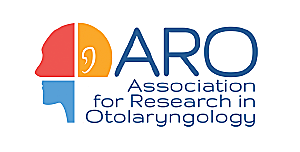
Hotel
The ARO 2023 Annual Meeting will be held at the Renaissance Orlando at Seaworld in Orlando, Florida on February 11-15, 2023.
** Room reservation links are given in your registration confirmation email!

CLICK HERE to take a virtual tour of the property!
Immerse yourself in the perfect Orlando meeting – Renaissance Orlando at SeaWorld style. Whether planning a small gathering or a large conference, your attendees will feel relaxed and well-connected from the moment they arrive. Our sophisticated design flows through over 215,000 square feet of innovative, flexible function space including the new and dynamic 30,000 sq. foot expansion and expansive 20,000 square feet of lush, outdoor event space. From our breathtaking 10-story sun-bathed lobby to our 781 modern, residential suites and luxurious guest rooms – among the largest in the Orlando area – a distinctive, exhilarating journey to discovery awaits. Allow our seasoned team to exceed your expectations as we provide the perfect combination of location, amenities and unexpected touches to create an unparalleled and memorable meeting. It’s all here. Renaissance Orlando at SeaWorld.
| Room Type | ARO Room Rate |
|---|---|
| Guest Room | $239/night |
| Corner King | $239/night |
Hotel rooms at this rate are limited, and available until January 13 or until they sell out. Please make your reservation early!
Additional Information:
Onsite Parking
There are a few parking options for those driving into the MidWinter Meeting!
Staying at the Venue:
There is self-parking which is $36+/day and valet-parking which is $50+/day. If a guest is staying overnight they will receive in and privileges for both types of parking. ARO has 50% off for self-parking rates (standard valet rates will apply). Attendees staying within the group block will receive this parking discount.
Staying Offsite:
There is self-parking which is $36+/day and valet-parking which is $50+/day. If a guest is driving in for the day they will not receive in and out privileges. ARO has 50% off for self-parking rates (standard valet rates will apply). You will be able to get a voucher at the hotel check-in desk.
Additional Hotel Options
Hotels near ARO MidWinter Meeting
Prices according to Google as of 1/9/23
- Renaissance Orlando at SeaWorld -------- $327 *Conference Hotel
- Holiday Inn Express & Suites Orlando ------------- $113
- Four Points by Sheraton Orlando --------- $159
- Hilton Grand Vacations Club ----------- $152
- Hilton Garden Inn Orlando at SeaWorld ------------ $218
- DoubleTree by Hilton ---------- $118
- Hampton Inn and Suites ---------- $170
- TownePlace Suites by Marriott ---------- $182
Airports
ORLANDO INTERNATIONAL AIRPORT (MCO)
1 Jeff Fuqua Blvd, Orlando, FL 32827
14 minutes / 11.8 miles Fastest Route via FL-528 E
Focus Airlines: JetBlue, Southwest, Frontier, Spirit
ORLANDO SANFORD INTERNATIONAL AIRPORT (SFB)
1200 Red Cleveland Blvd, Sanford, FL 32773
42 minutes / 41.5 miles Fastest Route via Fl-528 E to FL-417 N
Focus Airline: Allegient Other Airlines: Flair Airlines, Swoop Airlines *Charter flights to specific locations available*
TAMPA INTERNATIONAL AIRPORT (TPA)
100 George J Bean Pkwy, Tampa, FL 33607
1 hour 19 minutes / 79.9 miles Fastest Route via I-4 W Hub for Silver Airways
Focus Airlines: Southwest, Delta, and American
DAYTONA BEACH INTERNATIONAL AIRPORT (DAB)
700 Catalina Dr, Daytona Beach, FL 32114
1 hour 10 minutes / 66.3 miles Fastest Route via I-4 E
Available Airlines: American, Delta
Host a Small Meeting at ARO
Ground Transportation
HOTEL SHUTTLE
Available by reservation only
Must book at least 30 minutes prior to departure for all theme parks, 1 hour prior for Aquatica
Link to Resort Guide with specific pick up and drop off times:
https://mcosr.irisguest.net/mcosr/content/ standard/85bc05ad-3b8e-4d4b-8197-577cee019634? topbar=fb
ORLANDO I-RIDE TROLLEY I-Ride Trolley
Daily from 8:00am to 10:30pm
(407) 248-9590
www.iridetrolley.com
MEARS RIDE SHARE SHUTTLE
Estimated Cost $21.00 One Way
First come, First serve (Advanced Reservations Not Accepted)
(407) 423-5566
MEARS TAXI
Estimated Cost: $37-$40 One Way
(407) 422-2222
Group Discounts (Larger Manifests): Please Contact: Erin Leonhardt eleonhardt@mears.com O: 407-254-0440 Individual Reservations: 407-423-5566
MEARS LUXURY CARS
Estimated Cost: $70-$90 One Way
https://reserve.mearstransportation.com/#/
(407) 423-5566
RIDE SHARE
Starting at: $18 One Way
Local Attractions
The Renaissance Orlando at SeaWorld has much to offer its guests. Check out all the experinces the area can offere HERE. We have highlighted a few of the many opportnuiities avaible below:
SeaWorld Official Hotel Benefits
As an official hotel of SeaWorld®, registered guests of the Renaissance Orlando at SeaWorld® receive exclusive benefits to enjoy year-round during their Orlando vacation.
Your Orlando adventure starts here with us. To make your trip even sweeter, as our guest, you receive exclusive benefits to the SeaWorld® family of theme parks- SeaWorld® Orlando, Aquatica Orlando® and Discovery Cove®.
Guest benefits include:
Priority entry to SeaWorld® Orlando on select dates
10% off dining at SeaWorld® Orlando, Aquatica Orlando® and Discovery Cove®
10% off merchandise purchases of $50 or more at SeaWorld® Orlando, Aquatica Orlando® and Discovery Cove®
Plus, 10% off the Discovery Photo Package at Discovery Cove®.
Aquatica and Discovery Cove
From water slides and exhilarating wave pools to swimming with dolphins, SeaWorld®'s family of theme parks is fun for all ages.
Aquatica®, SeaWorld®’s whimsical one-of-a kind water park that lets you play side by side with the sea. This tropical oasis combines exhilarating water attractions with up close animal encounters for an experience like no other. Where one river floats you through an undersea world of colorful fish and another races you into rolling rapids. Twist and turn on splashing slides and brave the high waves of Walhalla Wave®.
Additional Information:
